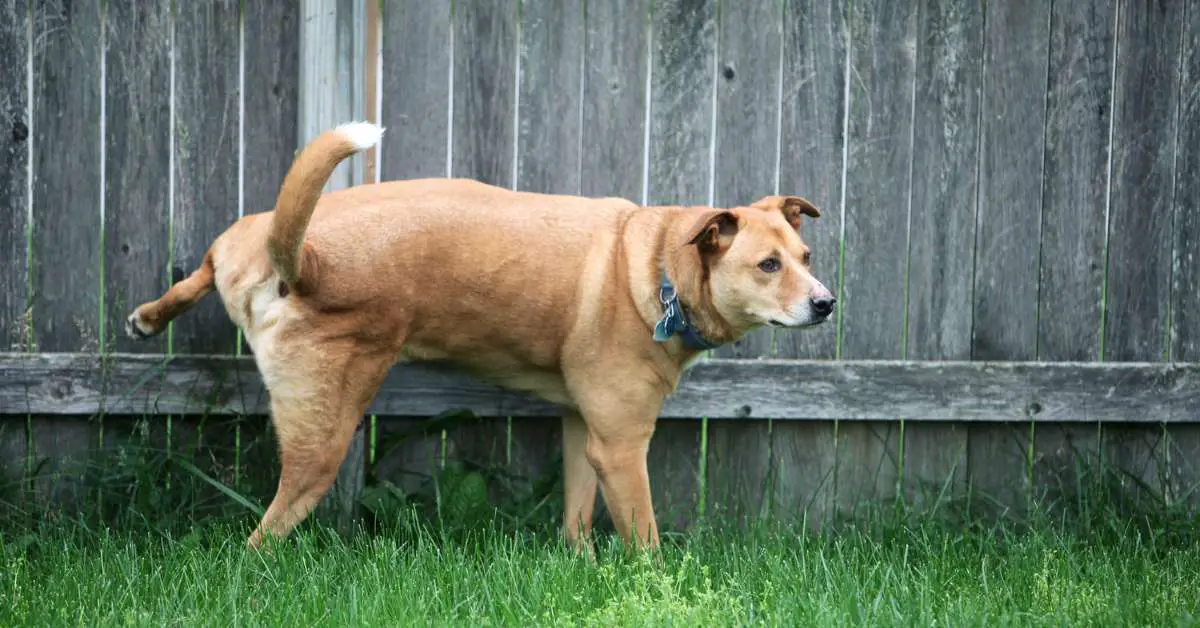Dog Not Peeing? Discover Common Causes and Helpful Solutions

Dogs often feel compelled to mark their territory by urinating on nearly every tree or item they encounter. However, if you notice that your dog is struggling to urinate or only expels a small quantity of urine when going to the bathroom, it may indicate an underlying health problem or an urgent medical situation.
Your dog’s inability to urinate can potentially lead to bladder rupture and other severe cases. Hence, it shouldn’t be left untreated.
In this guide, we’ll discuss why dogs experience difficulty urinating and when to visit the veterinarian to help pass urine pain-free and improve your dog’s health.
Dog Not Peeing: Common Causes For Trouble Peeing
Male dogs are more prone to urinary problems than female dogs. If your dog is straining to urinate or experiencing some pain while doing so, here are some of the underlying conditions:
Urinary stones
Urinary stones are usually found in the bladder. However, they can be present in the urethra and ureters.
Bladder stones develop due to the accumulation of mineral deposits in the bladder. They can be about 3 to 4 inches big. This condition is prevalent in dog breeds like Bulldogs and Dalmatians. In most cases, it can lead to bladder infection.
Urinary tract infections
Urinary tract infection is the most common cause of pee discomfort in older female dogs. This condition results from spasms in the urethra, which reduces the opening and causes dogs to struggle to urinate. Taking your pet to your veterinarian immediately is crucial to avoid kidney failure or sepsis.
Tumors on the bladder or urinary tract
Tumors are abnormal tissue growth. This cancerous mass can develop on the bladder, causing difficulty urinating.
Signs to Watch Out For
One of the early signs of urinary retention in dogs is the inability to urinate. You might notice an interrupted or weak urine stream. Other signs include your dog straining to urinate.
There are other symptoms of urinary retention, such as feeling discomfort or pain when peeing. This can be an indication of a severe condition like a distended bladder.
If you notice your dog barely pees during his bathroom break, call your vet to get your dog examined immediately to save him from excruciating discomfort and life-threatening illness.
What’s Urinary Retention?
Urinary retention describes a situation where a dog cannot pee or empty its bladder. It’s different from urinary incontinence, a term used to describe the inability of your pet to control their bladder.
Generally speaking, there are two types of urinary retention:
Functional urinary retention: this happens due to the dog’s bladder, kidneys, or urinary tract dysfunction. Usually, one of these organs is infected. Urinary tract infections, kidney disease, and even cancer are the leading culprits of functional urinary retention.
Mechanical urinary retention: dogs might have difficulty urinating due to urinary tract blockage. Several things can be responsible for the blockage, such as tumors, bladder stones, blood clots, and urethral narrowing. The affected dog’s treatment options require surgical removal or a urinary catheter.
Treatment Options for Pee Difficulty
Once you notice your dog straining during his pee break, seek vet care immediately. In a case where the infection is the main culprit, your veterinarian will likely proffer medication treatment. If the exact cause of your dog straining to pee is obstruction, then it has to be surgically removed by a veterinarian doctor.
It’s important to act quickly once you notice any changes in your pet’s bathroom habits or any symptoms of urinary retention. Your veterinarian will conduct serials of diagnostic tests to understand the primary cause and recommend either a special diet, meditation or surgery for quick recovery. Most dogs recover full and pee as usual in no time.
How to Prevent Urine Problems in Dogs
Bladder stones are one of the many causes of dogs straining to pee. This can be avoided by increasing your pet’s water intake. Also, special dog food containing low amounts of magnesium, phosphorus and protein can help keep bladder stones at bay.
In addition, cleaning and grooming your dog, especially the genital areas, prevent bacterial infections. Furthermore, you want to provide your furry friend with Vitamin C, clean water, cranberry capsules, antibiotics, etc.
Related FAQs
What are the common symptoms of bladder stones in dogs, and how can they affect urination?
Bladder stones in dogs manifest in numerous symptoms, including difficulty or inability to urinate, frequent attempts to urinate without producing much urine, blood in the urine, and signs of pain or discomfort during urination. These stones tend to cause hindrance in the dog’s bladder or urethra, making it difficult for the dog to pee normally.
How is a dog with bladder stones diagnosed?
To diagnose bladder stones in dogs, a veterinarian may perform a number of tests. These can include a physical examination, urine analysis, urine culture, and imaging techniques such as X-rays or ultrasound. Blood work, including a complete count, may also be done to investigate the dog’s overall health further and detect any underlying conditions.
What are the signs that my dog is having trouble peeing?
Some signs to look out for include straining or squatting for a prolonged period without producing any urine, frequent attempts to pee with little to no success, pain during every attempt, blood in the urine, and restlessness or agitation. These signs indicate the need for immediate veterinary attention.
Conclusion
Struggling to pee can be a painful experience for your pet. These cute man’s friends are not very vocal, so it’s up to watch for the cues and address the urinary problem immediately.
Antibiotic therapy, exercise, and enough clean water can help regain normal peeing for most dogs, particularly for mild cases. However, this problem can keep recurring. If that’s the case, take your dog to your vet immediately.
The inability of your dog to empty its bladder can pose many dire health risks and costly vet care. Abnormal urine flow should not be discarded as your pet toying around.
